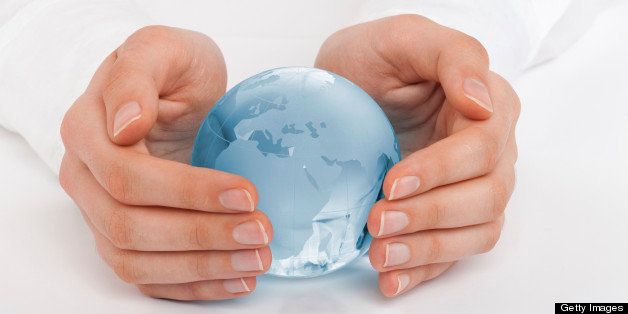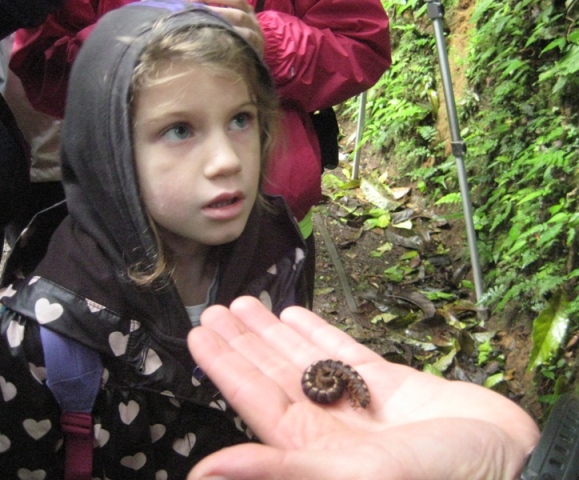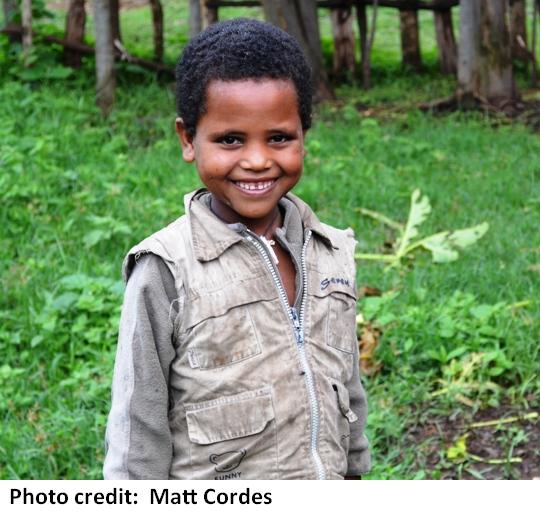
Earth Day Network is promoting "The Face of Climate Change" as the global theme for Earth Day 2013. The goal is to put a real-world face on the remote concept of climate change. During my research visits to various locations, I've encountered numerous faces linked to the climate change story. Following is a sampling of these faces accompanied by brief narratives.
How Old Will You Be in 2050?

Gabrilla is a Hungarian Girl Scout I met at the 2009 UN climate conference in Copenhagen. She was sporting a Girl Scout bandana and an orange t-shirt pointedly asking climate negotiators, "How old will you be in 2050?" Her message was clear. She told me, "We believe that the decisions that will be taken here will affect us and our children thereafter." Hope was high for Gabrilla and 100,000 other like-minded individuals who had converged on "Hopenhagen." Hope was so high that the conference resulted in the largest gathering of world leaders ever outside the UN in New York. Even newly elected President Obama attended. Unfortunately, like every previous climate conference, COP 15 was a bust. Climate negotiators could only agree to "Take Note" of the Copenhagen Accord. How will the climate in 2050 treat Gabrilla and her generation's children and grandchildren?
First Species Level Extinction Linked to Climate Change

Each year I travel with a college student group to Costa Rica on an ecological expedition focused on climate change and sustainability. My oldest granddaughter Ally (now 6 years old) tagged along the last two years. Pictured above, Ally listens intently to a naturalist in the Monteverde Cloud Forest Biological Reserve. This Reserve is a hot-spot for adverse impacts due to climate change. The Golden Toad (Bufo periglenes) was discovered here in 1964. Unlike other dark, mottled toads, this species looked like it had been dipped in golden enamel. Each spring, thousands of Golden Toads would emerge from the forest rubble to mate. The last sighting in 1989 was a lone toad in search of a mate. Found only within the reserve, the Golden Toad represented the first documented, species-level extinction linked to climate change. We now know that climate change is affecting ecological systems and individual species around the world. My deepest concern as a grandfather is what kind of Earth we are bequeathing to Ally, her six younger cousins, and all children.
Improving Climate Literacy among U.S. Students

Climate science illiteracy is one of the greatest hurdles in advancing climate change legislation in the U.S. Four students acting as UN accredited observers for the American Chemical Society (ACS) participated in the 2012 COP 18 In Doha, Qatar. Their objective was to engage U.S. students in the climate change discourse with an outcome of increased climate literacy. Using the UN as a platform, these students employed social networking to engage their peers back home. This was the third year of the ACS student observer project. The successful outcome of this continuing initiative will be a new generation's active engagement in one of the most pressing issues of our time.
Arab Youth Demonstration
Arab youth will likely experience the severity of climate change more than most other areas of the world. A recent Report by the World Bank warned that temperatures in the Arab world are increasing 50 percent faster than the global average. Arab youth get it, even though their elders may not. The picture above shows an unprecedented demonstration by Arab youth. This protest was staged in Doha, Qatar during the most recent UN climate conference. These Arab youth implored their respective governments to act immediately on climate change policies (see video link here). Failure to act guarantees increased risks of future water shortages and food security. For now, Qatar, like many Arab countries, reclaims water from the saline seas. This process requires energy, and a lot of it. They can do this because their vast petroleum reserves provide the needed energy to desalinate the water -- for now. What about the future? Quoting a Tuareg proverb from the Arab region, "The difference between paradise and desert is not water, but man."
Ethiopia Climate Resilient Green Economy
In July 2011, I traveled to Ethiopia with my colleague Matt Codes to investigate water as a climate change issue. The young boy pictured above was just one the many smiling, hopeful faces we encountered. Ethiopia is often depicted as a sun-scorched desert with its people existing on the edge of starvation. To the contrary, Ethiopia has plenty of water. It serves as the "water tower" for much of Africa. It has widely varied geography with lush plateaus, lofty mountains, pasturelands, and yes, desert. The problem is that water is unevenly distributed. Ethiopia is very susceptible to adverse effects of climate change. In 2011, then Prime Minister Meles Zenawi (1955-2012) unveiled Ethiopia's Climate Resilient Green Economy strategy aimed at creating jobs and reducing poverty through the development and green initiatives. He stated, "We have the opportunity to demonstrate that in the 21st century a new form of green growth is possible, which can avoid the mistakes of the developed world and create a pathway to green growth." Ethiopia has received international praise for its forward-thinking strategy. The likely beneficiaries will be its children.
We are reminded that the first Earth Day in 1970 launched the modern environmental movement that led to the formation of the EPA and enactment of the Clean Water, Clean Air, and endangered Species Acts. If civil society can put a face on climate change, surely we can pressure our legislators to enact legislation that, in like manner, will clean up our atmosphere in order to avoid a climate catastrophe.
All photos are the author's own unless noted.

